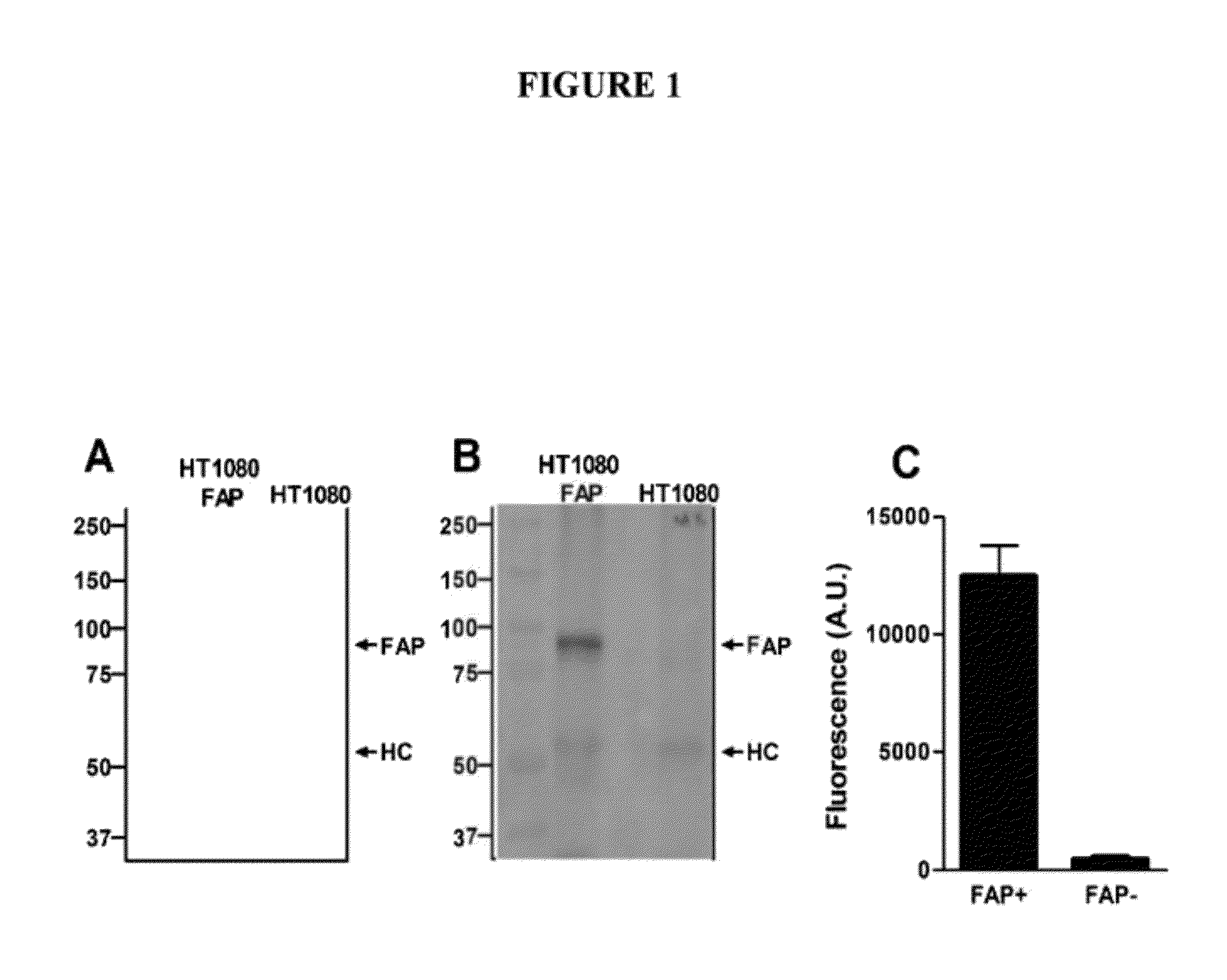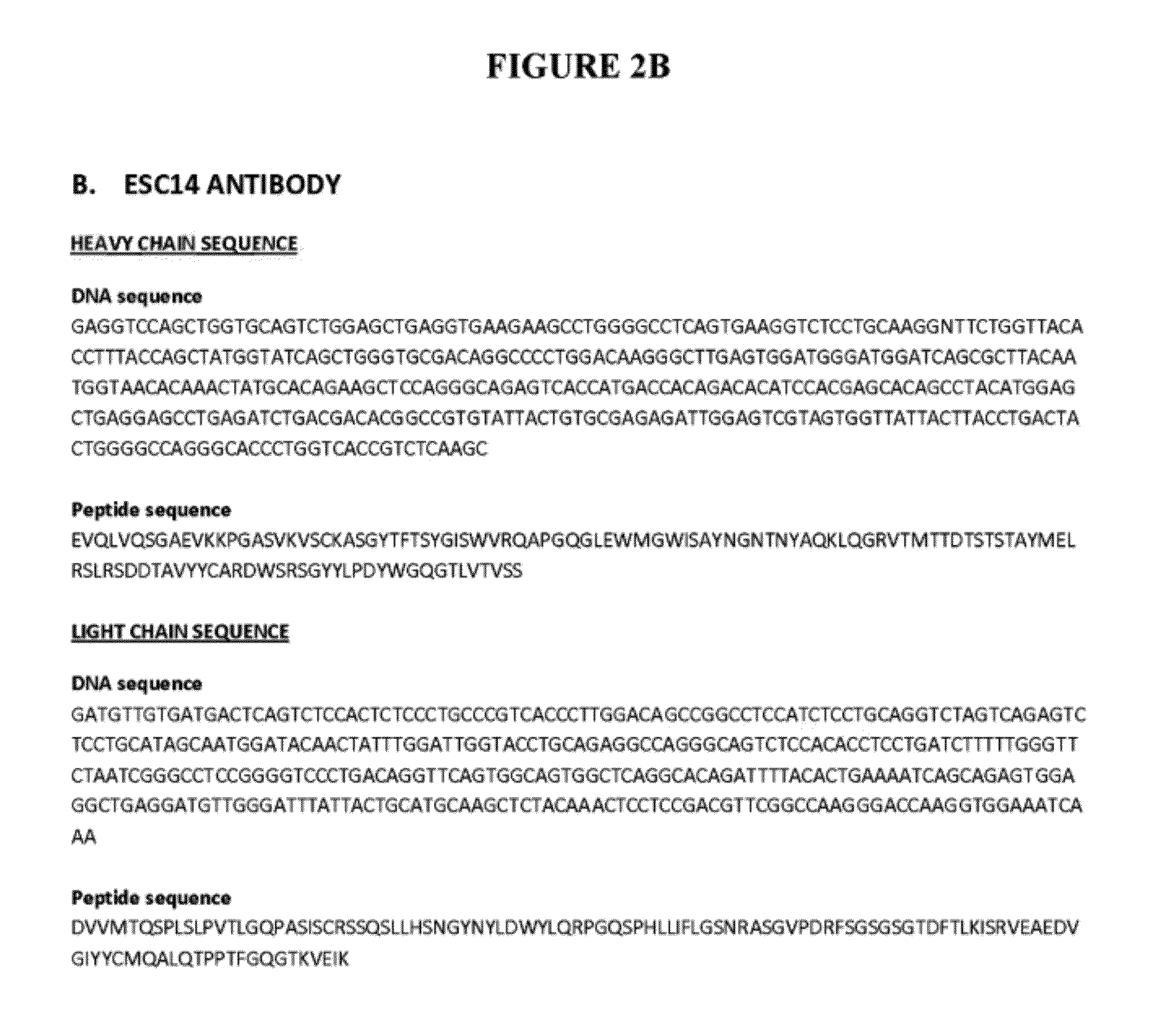Anti-fibroblast activation protein antibodies and methods and uses thereof
a technology of activation protein and anti-fibroblast, which is applied in the field of specific binding members, can solve the problems of difficult conclusion, unconjugated sibrotuzumab showing no anti-tumor or any therapeutic activity, and missing data of therapeutically active native fap-specific antibodies to date, so as to reduce the number or amount of active dipetidyl peptidase enzyme activity, inhibit cellular adhesion to ecm, and reduce the activity of activ
- Summary
- Abstract
- Description
- Claims
- Application Information
AI Technical Summary
Benefits of technology
Problems solved by technology
Method used
Image
Examples
example 1
[0173]Fibroblast Activation Protein (FAP) is a member of the dipeptidyl peptidase IV (DPPIV, CD26) protein family and capable of cleaving N-terminal dipeptides from polypeptides with proline or alanine in the penultimate position. FAP expression is up-regulated on activated fibroblasts such as carcinoma-associated fibroblasts and promotes malignant and invasive behaviour. We selected fully human Fab antibodies from a phage library that are cross-reactive to mouse and human FAP. The most frequently identified clones, ESC11 and ESC14, were chosen for further analysis since no binding to the highly homologous CD26 antigen was detected. Both antibodies are binding to FAP at low nanomolar affinities when converted into human IgG antibodies and could be produced in mammalian cell lines at high levels. ESC11 and ESC14 antibodies had no direct influence on the dipeptidyl peptidase IV activity of FAP induced conversion of a FAP-positive into a FAP-negative phenotype was paralleled by a signi...
example 2
[0259]The following studies demonstrate rapid internalization of FAP-antibody complexes in FAP expressing cells. HT1080FAP cells were incubated with fluorescence labelled anti-FAP antibody Esc11 Dylight4488 (DyLight, ThermoScientific). Incubation of HT1080FAP at 4° C. revealed a specific membrane staining pattern for FAP (FIG. 11A). When cells were warmed up to 37° C., rapid internalisation of FAP-Esc 11 complexes could be detected with cytoplasmatic spots and vesicular accummulation (FIG. 11B). An acidic cell wash to strip off any remaining cell surface bound Esc11 two hours after the start of incubation did not change the pattern, indicating that most of the antibody had already internalised after two hours.
[0260]Methods: HT1080FAP were grown on fibronectin coated glas slides over night. The cells were then treated with DyLight (Thermo Scientific) labeled ESC11IgG at either 4° C. or 37° C. for indicated time points. The cover slides were then mounted with fluoromount for fluoresce...
PUM
| Property | Measurement | Unit |
|---|---|---|
| size | aaaaa | aaaaa |
| pH | aaaaa | aaaaa |
| temperature | aaaaa | aaaaa |
Abstract
Description
Claims
Application Information
 Login to View More
Login to View More - R&D
- Intellectual Property
- Life Sciences
- Materials
- Tech Scout
- Unparalleled Data Quality
- Higher Quality Content
- 60% Fewer Hallucinations
Browse by: Latest US Patents, China's latest patents, Technical Efficacy Thesaurus, Application Domain, Technology Topic, Popular Technical Reports.
© 2025 PatSnap. All rights reserved.Legal|Privacy policy|Modern Slavery Act Transparency Statement|Sitemap|About US| Contact US: help@patsnap.com



